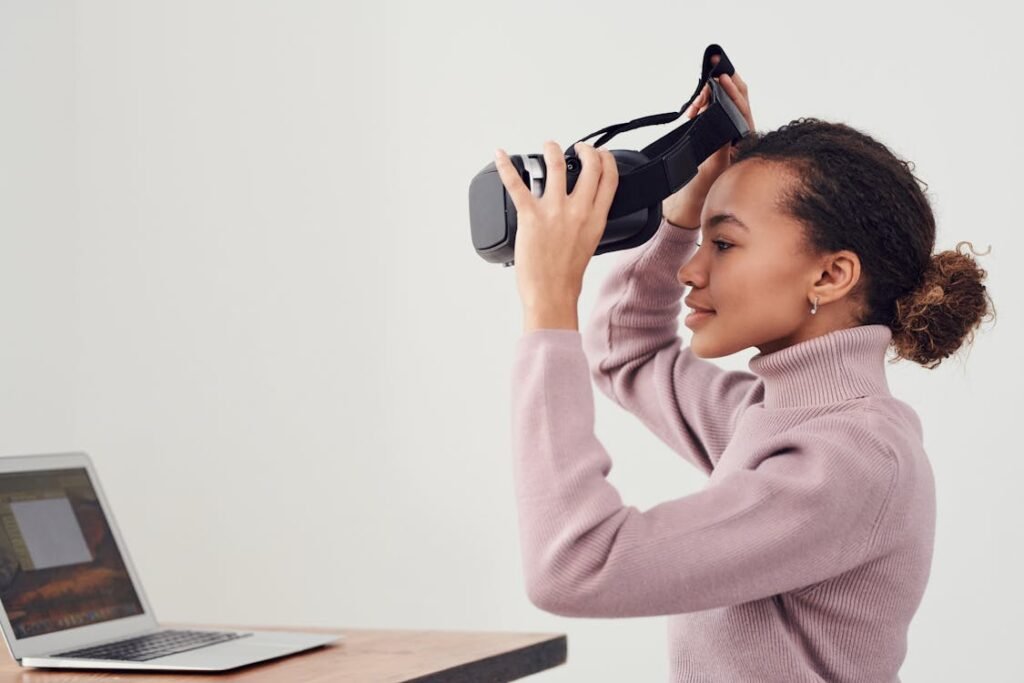Technology is changing the way amputees recover, adapt, and regain independence. One of the most exciting advancements in rehabilitation today is virtual reality (VR). Traditionally, amputee rehabilitation focused on physical therapy, strength training, and learning to use prosthetics in real-world settings. While these methods remain essential, VR is adding a new dimension to recovery—one that is immersive, engaging, and highly effective.
Virtual reality allows amputees to practice movement, improve muscle control, and even retrain their brains to reduce phantom limb pain. By creating realistic, controlled environments, VR makes rehabilitation feel less like therapy and more like an interactive experience. It speeds up the learning process, improves confidence, and helps users feel more comfortable with their prosthetic limbs.
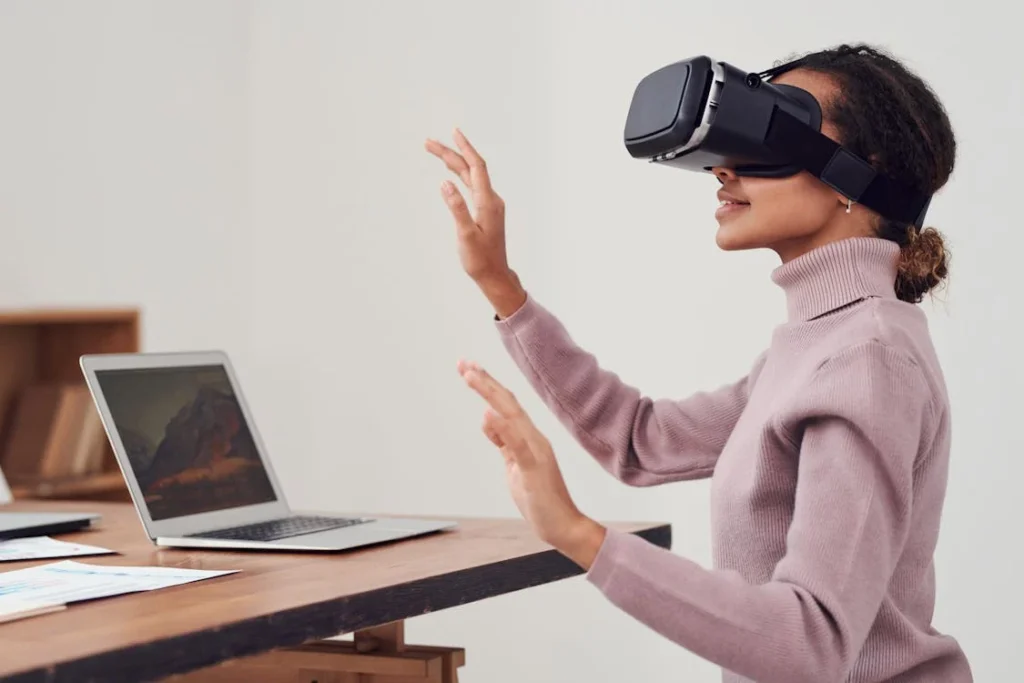
The Role of Virtual Reality in Amputee Rehabilitation
Virtual reality is not just about entertainment; it has become a powerful tool in the medical field, especially in rehabilitation. For amputees, the road to recovery involves retraining the brain and body to adapt to a new way of moving.
This process can be slow, frustrating, and physically demanding. VR offers a unique way to make rehabilitation more effective by providing an engaging, controlled, and immersive environment where patients can practice movements and overcome challenges in a safe space.
How VR Helps the Brain Adapt
One of the biggest challenges amputees face is phantom limb pain—a condition where the brain still sends signals to the missing limb, causing pain, tingling, or discomfort.
This happens because the brain has not yet adjusted to the loss of the limb and continues to expect it to be there.
Virtual reality helps by creating visual feedback that “tricks” the brain into believing the limb is still present, allowing it to reorganize its neural pathways and reduce pain.
Through VR, amputees can see a virtual version of their missing limb on a screen. When they move their intact limb, the virtual limb responds as if it were real.
This helps the brain create new connections and accept the absence of the actual limb, which in turn reduces phantom limb pain.
This method, similar to mirror therapy, has shown promising results in helping amputees feel more comfortable and less distressed by phantom sensations.
Improving Muscle Control and Strength
For those using prosthetics, one of the most important aspects of rehabilitation is learning how to control the artificial limb with precision. This requires strengthening the muscles around the residual limb, improving coordination, and building endurance.
Virtual reality offers specialized training programs where amputees can practice gripping objects, walking, or performing everyday tasks in a virtual setting before attempting them in real life.
This kind of repetitive practice helps users gain confidence without the fear of falling, dropping things, or making mistakes.
Since VR environments can be customized to match the specific needs of each individual, therapists can design exercises that gradually increase in difficulty, allowing for steady progress without unnecessary strain or discomfort.
Making Rehabilitation More Engaging
Traditional rehabilitation can sometimes feel repetitive and discouraging, especially when progress is slow. Many amputees struggle with motivation, particularly in the early stages of recovery.
Virtual reality makes rehabilitation more engaging by turning exercises into interactive experiences.
Instead of simply performing repetitive hand movements or balance exercises, patients can engage in virtual tasks such as assembling objects, playing simulated sports, or navigating through virtual landscapes.
This gamification of therapy makes sessions more enjoyable and keeps users motivated to continue their rehabilitation journey.
The immersive nature of VR also reduces external distractions, allowing amputees to focus fully on their movements and improve their motor skills faster.
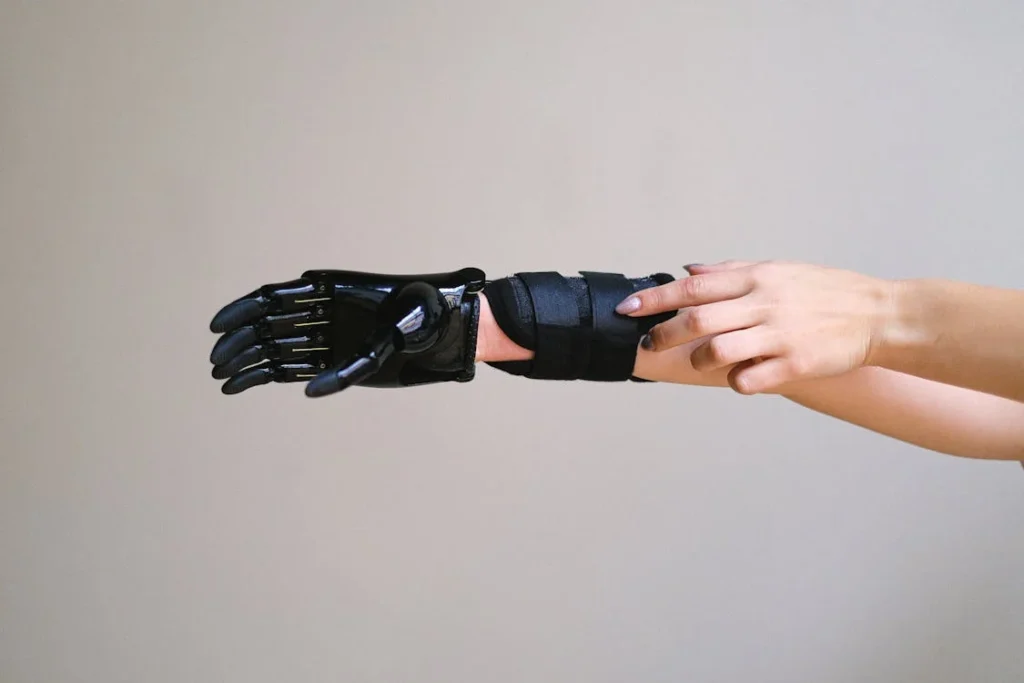
Enhancing Prosthetic Training with Virtual Reality
Learning to use a prosthetic limb is a process that requires patience, practice, and confidence. Many amputees struggle in the beginning, as controlling an artificial limb feels unnatural.
The brain must adapt to a new way of movement, and the muscles that support the prosthetic need to be strengthened. Virtual reality helps make this learning curve easier by creating a realistic training environment where users can practice without fear of failure.
Building Coordination and Confidence
One of the biggest challenges new prosthetic users face is trusting their artificial limb. Many amputees feel hesitant when using a prosthetic for the first time, worried about balance, control, or making mistakes.
Virtual reality offers a risk-free space where they can practice movements before trying them in the real world.
For example, a lower-limb amputee can use VR to simulate walking on different surfaces, such as grass, sand, or stairs.
They can practice shifting weight, taking steps, and correcting posture—all while remaining in a safe, controlled environment. This reduces the fear of falling and helps them gain confidence in their abilities before using their prosthetic in everyday situations.
Upper-limb amputees benefit from VR training as well. They can practice gripping objects, pouring liquids, or manipulating small items using a virtual version of their prosthetic hand.
Since VR allows for instant feedback, users can adjust their grip strength and coordination in real time. This makes it easier to perform daily tasks once they transition to real-world use.
Customizing Training to Individual Needs
Every amputee’s rehabilitation journey is different. Some may need more focus on balance, while others struggle with fine motor control. Virtual reality allows therapists to customize training programs based on an individual’s specific needs and progress.
If a patient struggles with turning corners while walking, the VR simulation can focus on navigation exercises that improve stability.
If someone needs to improve hand-eye coordination, the system can introduce interactive tasks like picking up virtual objects or stacking blocks. This adaptability makes VR one of the most personalized rehabilitation tools available.
In addition to physical training, VR also helps amputees adjust emotionally to their new prosthetic. By allowing them to interact with a digital version of their artificial limb before wearing it in real life, VR helps create a mental connection between the user and the device.
This reduces feelings of unfamiliarity and makes the transition to using a prosthetic smoother.
Reducing Frustration and Increasing Motivation
One of the main reasons amputees struggle with prosthetic adaptation is frustration. When movements do not feel natural, it is easy to become discouraged.
Virtual reality turns rehabilitation into an interactive and engaging experience, making training less stressful and more rewarding.
Instead of focusing on mistakes, VR encourages continuous learning through trial and error. Users can repeat movements as many times as needed without worrying about physical strain or failure.
The sense of accomplishment after successfully completing a virtual task boosts confidence and motivates users to keep progressing in their rehabilitation.

Reducing Phantom Limb Pain with Virtual Reality
Phantom limb pain is one of the most common and frustrating challenges that amputees face. The brain continues to send signals to the missing limb, creating the sensation of pain, tingling, or cramping.
Traditional treatments such as medications and physical therapy offer relief for some, but many amputees still struggle with persistent discomfort.
Virtual reality is emerging as a breakthrough solution for managing and even eliminating phantom limb pain by retraining the brain to stop sending these pain signals.
How Virtual Reality Rewires the Brain
The brain is highly adaptable, but when a limb is lost, it takes time for the neural pathways to adjust. The areas of the brain responsible for controlling the missing limb still expect feedback from it, which leads to phantom sensations.
Virtual reality creates an illusion that the limb is still present, helping the brain rewire itself and reduce pain.
In a VR session, an amputee wears a headset and interacts with a digital version of their missing limb. When they move their intact limb, the virtual limb moves in the same way, tricking the brain into believing that both limbs are functioning normally.
Over time, this retraining process weakens the phantom pain signals, reducing discomfort and improving overall well-being.
The Science Behind VR Pain Relief
Studies have shown that mirror therapy, which uses a simple mirror to create a visual representation of the missing limb, helps reduce phantom limb pain.
Virtual reality expands on this concept by providing a more immersive and interactive experience. Unlike a static mirror, VR allows the amputee to see and control a virtual limb in real-time, making the illusion more convincing and effective.
During VR therapy, patients engage in simple tasks such as moving fingers, stretching, or grasping objects with their virtual limb.
These actions send signals to the brain, reinforcing the idea that the limb is functional and no longer in pain. As the brain adapts, the intensity and frequency of phantom limb pain decrease.
Long-Term Benefits of VR Therapy for Pain
Phantom limb pain can interfere with sleep, mental health, and daily activities. By integrating VR therapy into rehabilitation, amputees experience lasting pain relief without relying on medications.
Many patients report improvements after just a few sessions, and continued use strengthens the brain’s ability to suppress phantom pain signals.
Beyond pain reduction, VR therapy also improves muscle relaxation in the residual limb. Tension in the surrounding muscles often worsens pain, but as the brain begins to accept the limb’s absence, the entire body becomes more at ease.
This leads to better prosthetic comfort, easier movement, and an overall improvement in quality of life.
At Robobionics, we believe that innovative solutions like VR have the power to transform amputee rehabilitation.
By addressing both physical and neurological challenges, VR is proving to be a game-changer in reducing phantom limb pain and helping amputees move forward with greater comfort and confidence.

Boosting Psychological Recovery and Emotional Well-Being
Recovering from an amputation is not just about physical rehabilitation—it is also an emotional journey. Many amputees struggle with feelings of loss, frustration, and anxiety as they adjust to life with a prosthetic limb.
Virtual reality is proving to be a powerful tool in helping amputees rebuild confidence, reduce anxiety, and regain a sense of normalcy in their lives.
Overcoming Fear and Anxiety Through VR
Stepping back into the world after an amputation can feel overwhelming. Many amputees worry about being stared at, struggling with mobility in public places, or not being able to perform daily tasks independently.
These fears can lead to social withdrawal and a lack of confidence in using a prosthetic.
Virtual reality offers a safe and controlled environment where amputees can practice real-world scenarios without pressure.
For example, someone who feels nervous about walking in a crowded space can first experience it in VR, where they can practice moving through a virtual city, interacting with people, and building confidence before attempting it in real life.
For upper-limb amputees, VR can help them relearn daily activities like cooking, writing, or using a computer. These virtual exercises allow users to develop their skills at their own pace, removing the fear of failure and frustration that often comes with real-world practice.
Helping Amputees Process Their Emotional Journey
Beyond physical adaptation, VR also plays a role in mental and emotional healing. Many amputees experience post-traumatic stress after an accident or medical condition that led to limb loss.
VR therapy is being used to help patients process their emotions, regain a sense of control, and work through their feelings in a guided and therapeutic setting.
For example, VR can simulate relaxing environments, such as a beach, a forest, or a quiet meditation space. These experiences help reduce stress, lower anxiety levels, and promote emotional healing.
Guided VR therapy sessions can also include breathing exercises, mindfulness techniques, and stress management practices, helping amputees develop coping strategies that improve their overall well-being.
Creating a Sense of Achievement and Motivation
One of the biggest challenges in rehabilitation is staying motivated. Traditional therapy can feel repetitive, and progress can sometimes seem slow. VR makes the recovery process engaging and goal-oriented, encouraging amputees to keep pushing forward.
With game-like exercises and virtual challenges, patients can see their improvements in real-time. Whether it is successfully gripping objects, improving balance, or mastering movement coordination, these small victories in VR create a sense of achievement and progress.
Many amputees feel a renewed sense of purpose when they see tangible improvements in their abilities, leading to greater motivation in their overall recovery.

The Future of Virtual Reality in Amputee Rehabilitation
Virtual reality is still evolving, but it is already making a significant impact in the field of amputee rehabilitation.
As technology advances, VR will become even more immersive, personalized, and accessible, offering new ways to enhance recovery, improve prosthetic training, and provide emotional support for amputees.
The future of rehabilitation is digital, and VR is at the forefront of this transformation.
Advancements in Prosthetic Integration
One of the most exciting developments in VR rehabilitation is the ability to connect directly with prosthetic limbs. Researchers are working on brain-computer interfaces (BCI) that allow amputees to control their prosthetics using their thoughts.
By combining this technology with VR, users can practice movement in a virtual space before applying it in the real world.
This kind of training will be particularly useful for bionic and myoelectric prosthetics, which respond to muscle signals. VR will help amputees fine-tune their control, making movements more natural and precise.
Instead of relying on trial and error with a physical prosthetic, users will be able to perfect their motions in a virtual environment, reducing frustration and speeding up adaptation.
AI-Powered Virtual Coaches for Personalized Rehabilitation
Artificial intelligence (AI) is expected to revolutionize VR rehabilitation by providing real-time feedback and personalized training.
Future VR systems will analyze how an amputee moves and automatically adjust training exercises to suit their needs. AI-powered virtual coaches will guide users, correcting posture, suggesting improvements, and tracking progress over time.
This will allow rehabilitation programs to be more adaptive and data-driven, ensuring that each patient receives the most effective therapy for their specific challenges.
It will also provide remote rehabilitation options, allowing amputees to continue therapy from home while staying connected to their healthcare providers.
Expanding Accessibility and Affordability
Currently, VR rehabilitation is mostly available in specialized medical centers. However, as VR technology becomes more affordable and widely available, more amputees will have access to these tools from home.
Standalone VR systems that do not require expensive setups will allow users to engage in rehabilitation at their own pace, without needing to visit a clinic for every session.
Companies and healthcare providers are also working to integrate VR into standard rehabilitation programs, making it a regular part of therapy rather than a specialized option.
This shift will make high-quality, immersive rehabilitation available to more amputees worldwide, improving recovery rates and overall quality of life.
A New Era of Rehabilitation
The future of amputee rehabilitation is being shaped by technology, innovation, and patient-centered care. Virtual reality is not just a tool—it is a game-changer that empowers amputees, enhances recovery, and redefines what is possible after limb loss.
At Robobionics, we believe that embracing cutting-edge technology like VR is the key to creating a more effective, engaging, and empowering rehabilitation experience.
As VR continues to evolve, we are committed to integrating these advancements into our prosthetic solutions, ensuring that every amputee has access to the best tools for their recovery journey.

Virtual Reality in Pediatric Amputee Rehabilitation
Children who experience limb loss face unique challenges in rehabilitation. Unlike adults, they are still growing, learning motor skills, and developing their sense of independence.
Traditional rehabilitation methods can sometimes feel intimidating or boring for young amputees, making it difficult to keep them engaged in therapy.
Virtual reality is proving to be a game-changing tool for pediatric amputees, offering an interactive, playful, and immersive approach to rehabilitation.
Making Therapy Fun and Engaging
Children naturally respond well to play-based learning, and VR turns rehabilitation into an engaging activity rather than a medical process.
Instead of repetitive exercises, young amputees can interact with virtual worlds where they solve puzzles, complete obstacle courses, or play sports. These activities help them practice prosthetic control, balance, and coordination in a way that feels exciting and rewarding.
By creating a positive emotional connection to therapy, VR reduces fear and frustration, encouraging children to participate more actively in their recovery. This also helps caregivers and therapists by making sessions more productive and enjoyable for young patients.
Building Confidence in Social Interactions
Many children with limb differences experience social anxiety, especially when they start school or interact with new peers.
VR can help them build confidence by creating simulated environments where they practice social interactions, such as introducing themselves, answering questions about their prosthetic, or participating in virtual group activities.
These exercises allow children to develop social skills in a safe, judgment-free space, making them more comfortable when they engage with others in real life.
VR also provides peer-support environments, where children can interact with other young amputees, reducing feelings of isolation and helping them feel more accepted.
Encouraging an Active Lifestyle from an Early Age
Developing an active lifestyle early on is crucial for long-term health, especially for children who use prosthetics. Virtual reality can introduce adaptive sports and movement-based activities that encourage fitness while making exercise fun.
Children can practice running, jumping, swimming, or even playing team sports in a virtual environment, which helps them develop confidence in using their prosthetic in physical activities.
These experiences promote a lifelong love for movement, reducing the risk of a sedentary lifestyle, which can lead to secondary health issues like obesity or muscle weakness.
By integrating VR into pediatric rehabilitation, young amputees are empowered to see their prosthetic as a tool for adventure rather than a limitation.
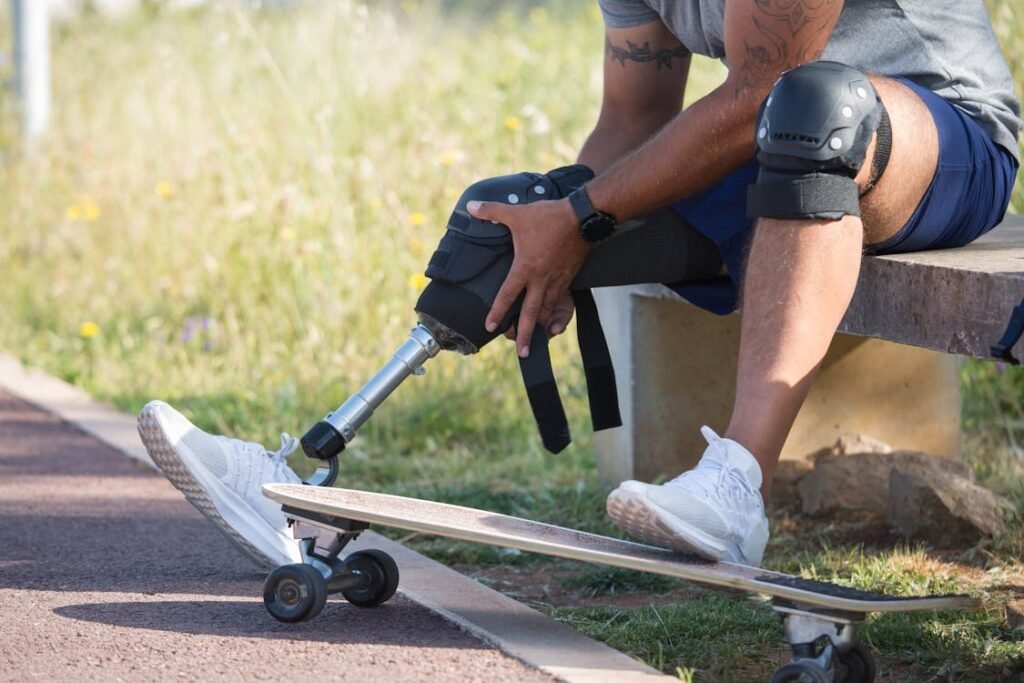
Virtual Reality for Military and Trauma-Related Amputees
For veterans and individuals who have lost limbs due to trauma, rehabilitation is not only a physical journey but also a deeply emotional one.
Many military amputees experience post-traumatic stress disorder (PTSD) alongside their physical recovery. Virtual reality is offering new hope in addressing both the physical and psychological challenges faced by trauma survivors.
Managing PTSD Alongside Physical Rehabilitation
Traumatic amputations, especially those resulting from accidents or combat injuries, often leave lasting psychological scars. Many amputees struggle with flashbacks, anxiety, and emotional distress related to the event that caused their limb loss.
Traditional rehabilitation focuses on the physical aspects of recovery, but VR allows for a more integrated approach, addressing both the mind and body.
VR exposure therapy has been developed to help trauma survivors process difficult memories in a controlled environment.
By gradually re-experiencing certain aspects of their trauma in a safe and guided virtual setting, patients can work through their fears, reduce anxiety, and regain a sense of control.
When combined with prosthetic training, this approach helps amputees recover in a more holistic and sustainable way.
Simulating Real-World Challenges for Adaptive Training
Many military and trauma-related amputees want to return to active lifestyles, whether it is hiking, driving, or engaging in sports. VR allows them to train for these activities in a customized, risk-free setting before attempting them in real life.
For example, a lower-limb amputee who wants to return to hiking can practice walking on different terrains in VR, adjusting their balance and posture as they navigate hills, rocky paths, or uneven surfaces.
Upper-limb amputees can practice fine motor skills like handling tools, lifting objects, or even engaging in simulated tactical drills, depending on their rehabilitation goals.
By providing realistic and adaptive training, VR helps amputees feel more prepared for everyday challenges, boosting their confidence and independence in the process.
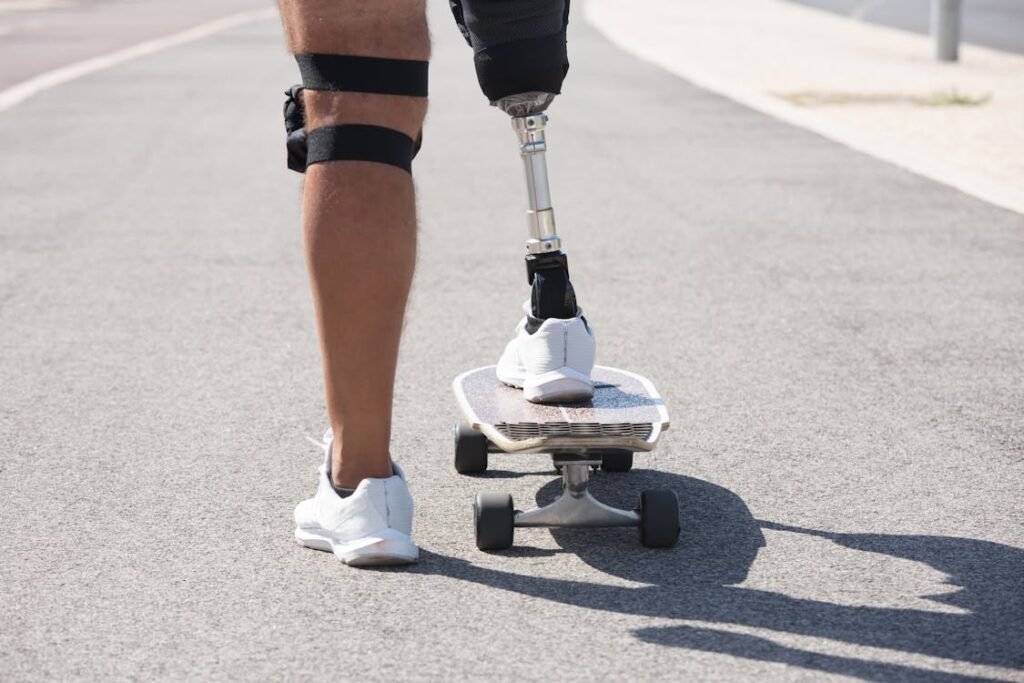
The Role of Virtual Reality in Home-Based Rehabilitation
Not all amputees have access to specialized rehabilitation centers, especially in rural areas or developing regions. Virtual reality is opening the door for home-based rehabilitation, allowing patients to continue their recovery from the comfort of their own homes.
Bringing High-Quality Therapy to More Amputees
In many parts of the world, access to rehabilitation services is limited. Distance, cost, and availability of trained therapists can create barriers to proper recovery.
VR-powered tele-rehabilitation provides a solution by connecting amputees with therapists remotely, guiding them through customized exercises without requiring frequent hospital visits.
Using standalone VR headsets and mobile applications, amputees can engage in therapist-approved rehabilitation exercises from anywhere.
These systems track movements, measure progress, and provide feedback in real-time, ensuring that patients stay on track with their therapy goals.
Creating Long-Term Engagement with Rehabilitation
One of the biggest challenges of home-based rehabilitation is sticking to the routine. Many amputees find it difficult to stay motivated when exercising alone.
Virtual reality transforms home therapy into a more engaging and interactive experience, increasing compliance and making daily rehabilitation feel less like a chore.
By offering gamified challenges, progress tracking, and personalized feedback, VR therapy keeps users engaged, helping them stay consistent with their recovery plan.
Over time, this leads to better mobility, improved prosthetic control, and reduced discomfort, ensuring that amputees achieve their full potential in rehabilitation.
Conclusion
Virtual reality is not just a tool—it is a revolution in amputee rehabilitation. By making therapy immersive, engaging, and highly personalized, VR is helping amputees regain mobility, reduce pain, and build confidence faster than ever before. Whether it is phantom limb pain relief, prosthetic training, psychological recovery, or home-based therapy, VR offers a new way forward, bridging the gap between traditional rehabilitation and cutting-edge innovation.
As VR technology continues to evolve, its role in amputee care will only grow, making rehabilitation more accessible, effective, and empowering. At Robobionics, we are committed to integrating the latest advancements in prosthetic technology to ensure that every amputee receives the best possible support.



